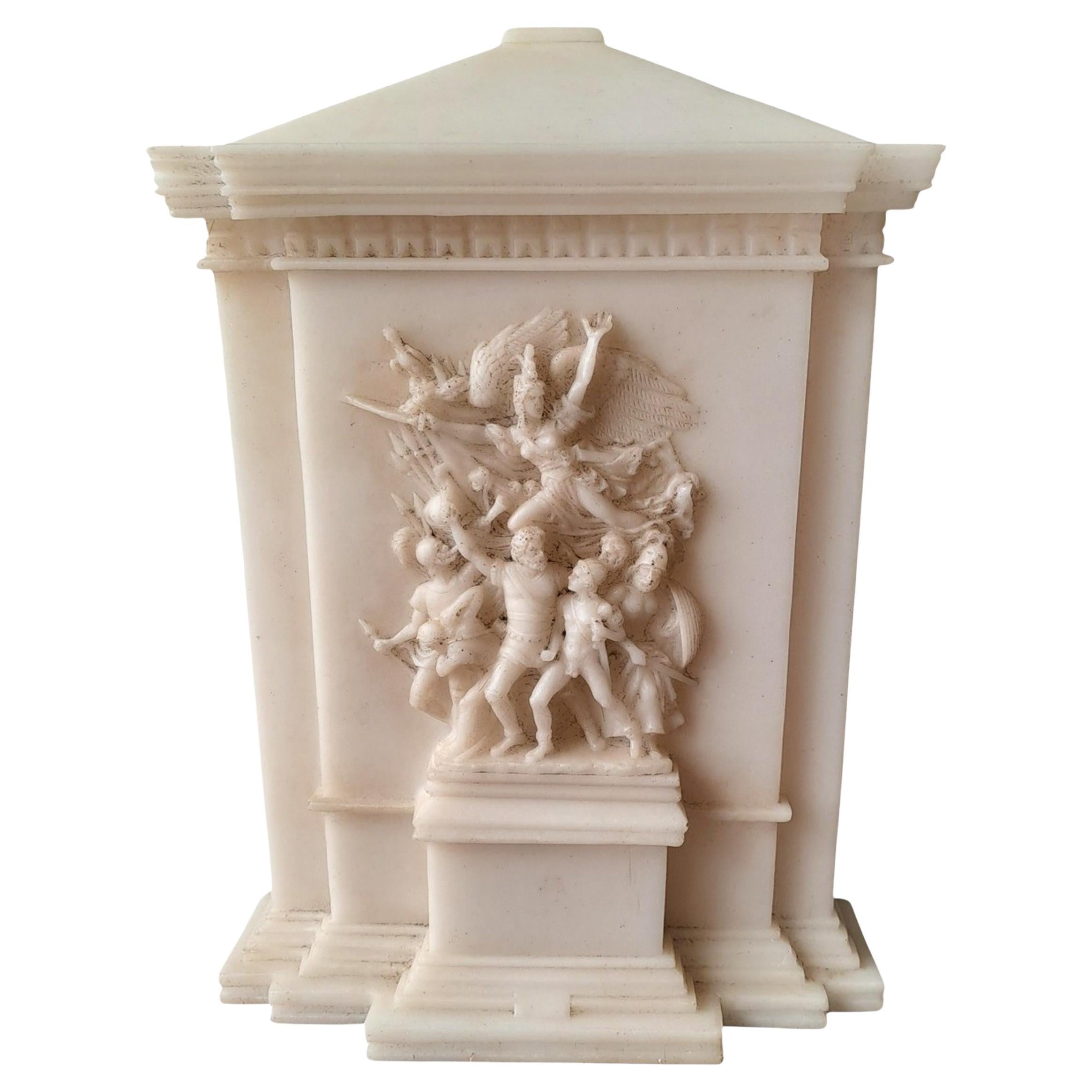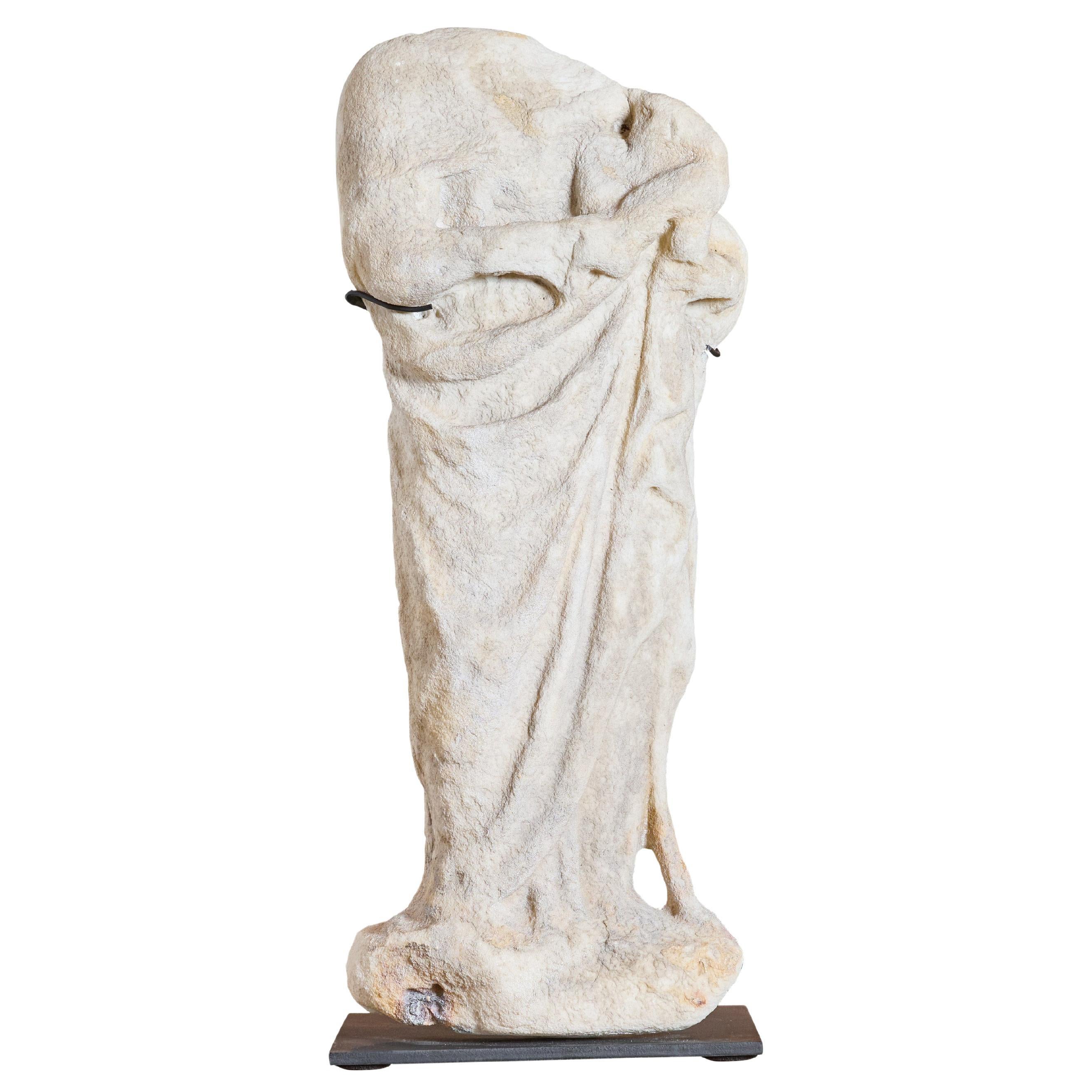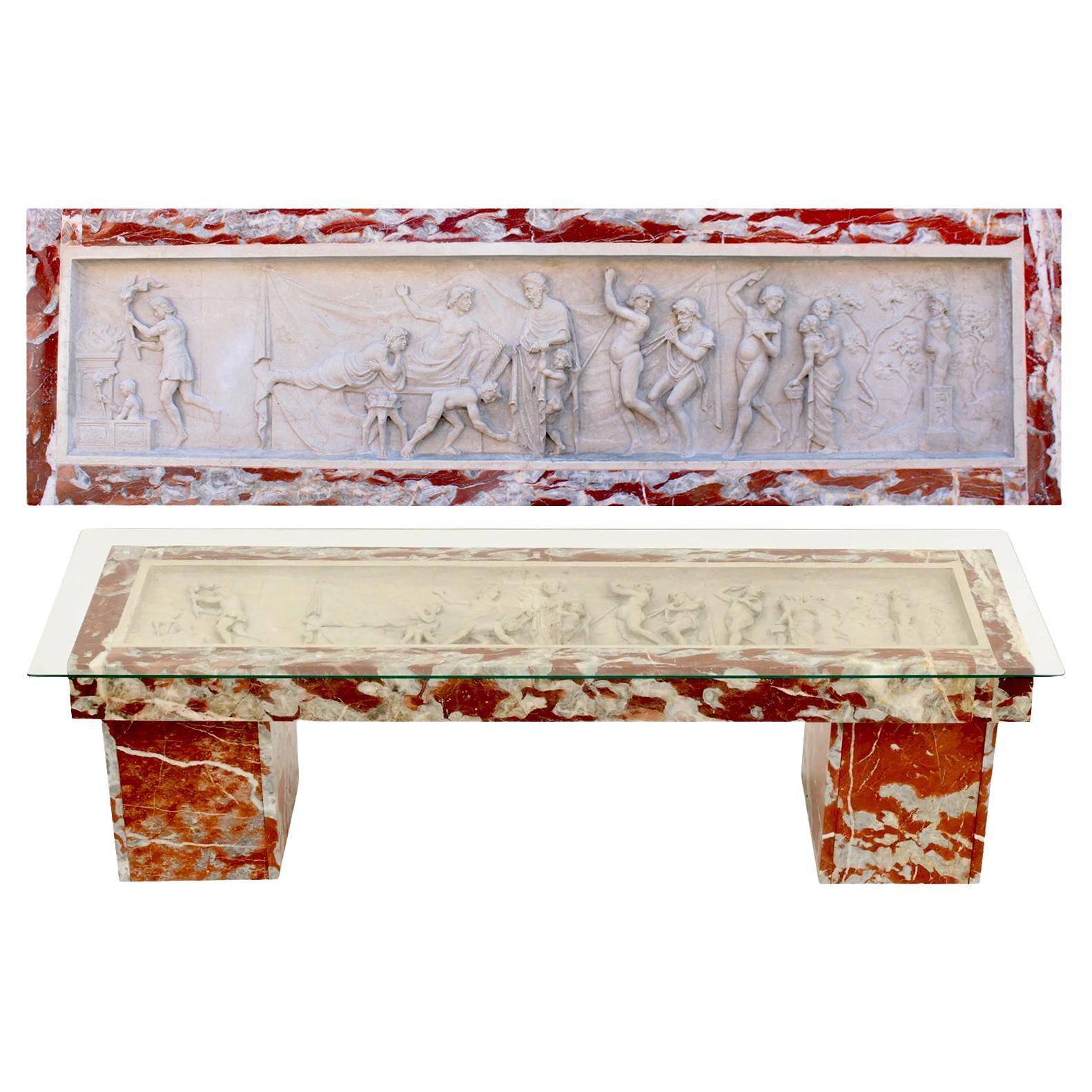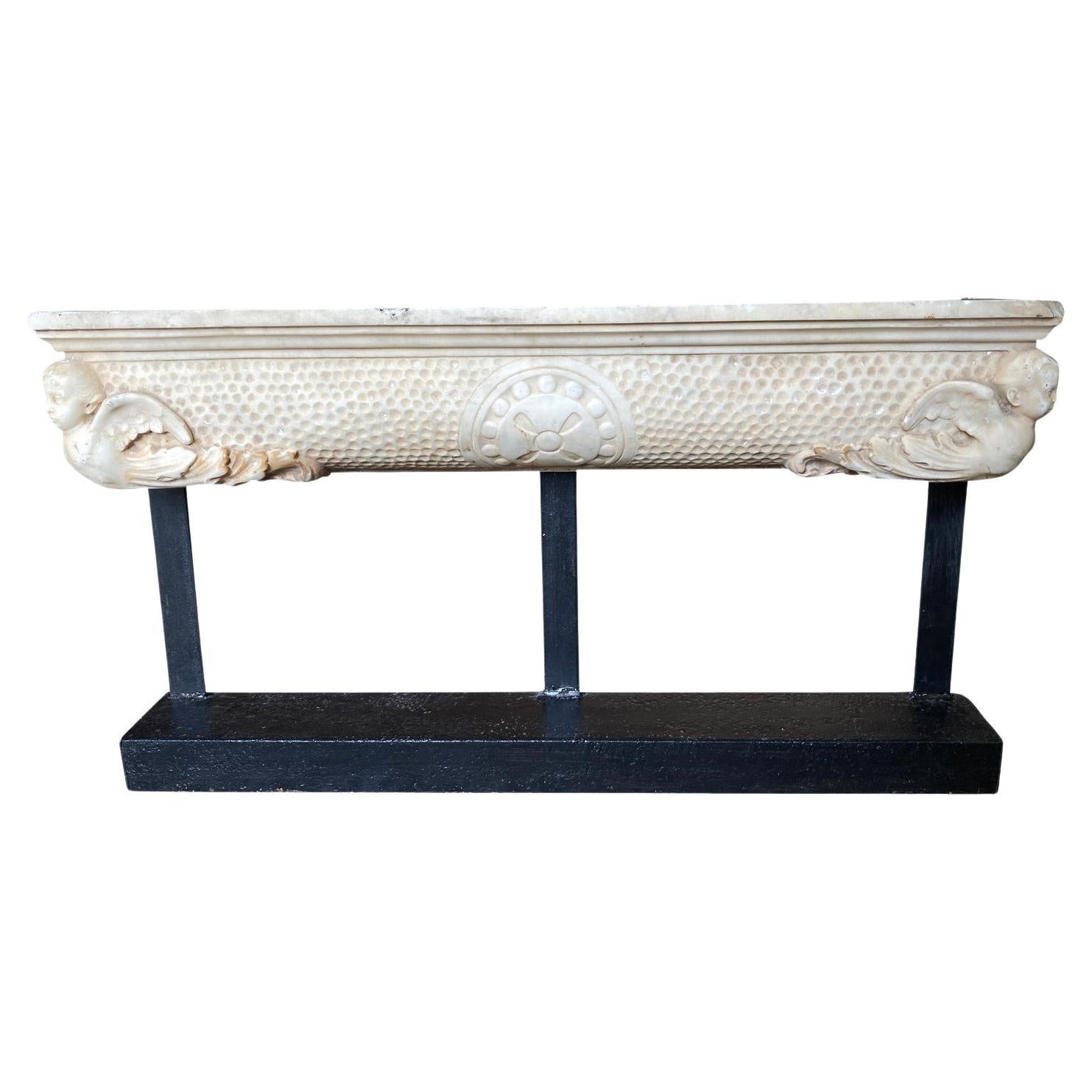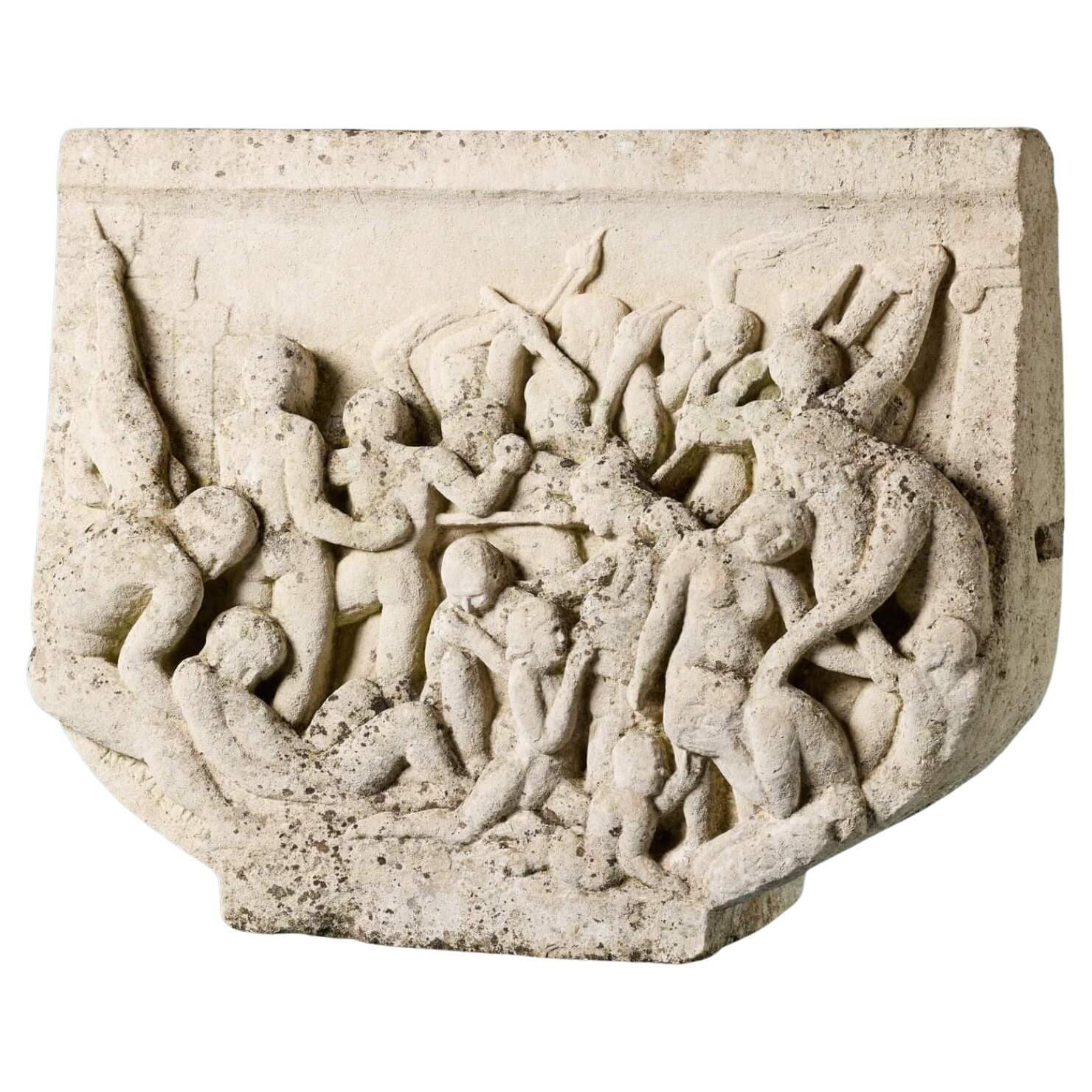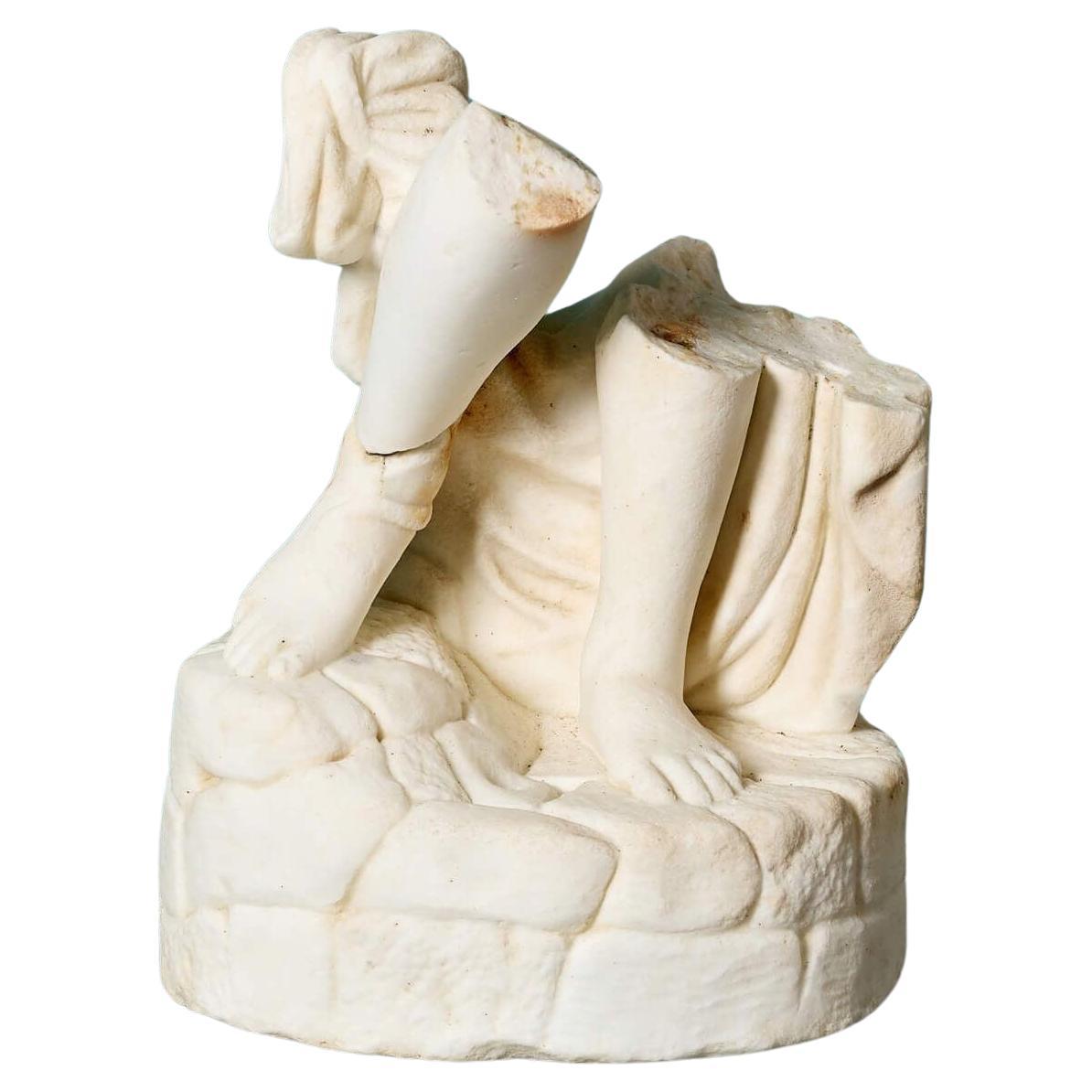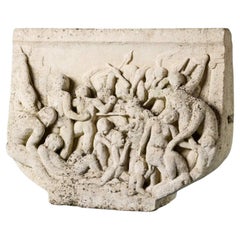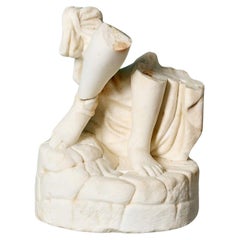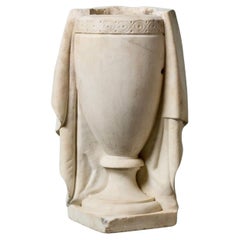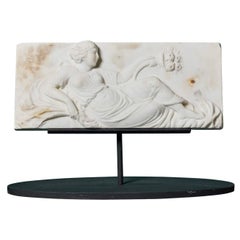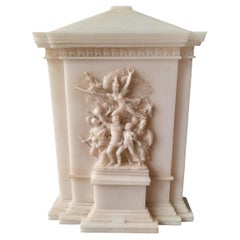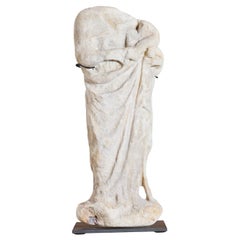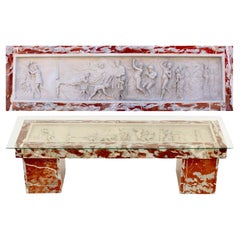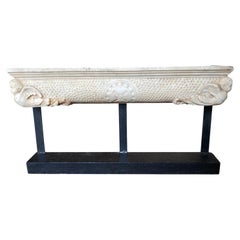Items Similar to Antique Marble Carving of the Ludovisi Throne
Want more images or videos?
Request additional images or videos from the seller
1 of 5
Antique Marble Carving of the Ludovisi Throne
$10,976.92
£7,975
€9,347.99
CA$14,985.58
A$16,670.84
CHF 8,739.06
MX$203,713.63
NOK 111,281.09
SEK 104,755.75
DKK 69,779.17
Shipping
Retrieving quote...The 1stDibs Promise:
Authenticity Guarantee,
Money-Back Guarantee,
24-Hour Cancellation
About the Item
Antique Marble Carving of the Ludovisi Throne. A Grand Tour style carving of the “Ludovisi Throne”. Aphrodite is attended by two handmaidens as she rises out the surf. The original Greek sculpture was carved circa 460 BC.
Ludovisi Throne
When discovered the Ludovisi Throne was thought to be the seat from a statue of a colossal god, but the definite function is unknown. It may have been a throne, an altar, or enclosure for ritual sacrifices.
According to the myth, the goddess Aphrodite was born from the foam of the sea on the beaches of Cyprus. The pebbles that Aphrodite’s attendants are standing on can be seen in the depiction.
It was discovered at the ancient Villa Ludovisi, in Rome, in 1887.
- Dimensions:Height: 11.62 in (29.5 cm)Width: 17.72 in (45 cm)Depth: 10.24 in (26 cm)
- Materials and Techniques:
- Period:
- Date of Manufacture:1890
- Condition:Good structural condition. There have been various historic repairs, mainly concentrated round the back of the carving. It is in a stable condition. There are some small chips and losses.
- Seller Location:Wormelow, GB
- Reference Number:Seller: 9322441stDibs: LU2096328990482
About the Seller
4.9
Platinum Seller
Premium sellers with a 4.7+ rating and 24-hour response times
Established in 2006
1stDibs seller since 2016
697 sales on 1stDibs
Typical response time: 9 hours
- ShippingRetrieving quote...Shipping from: Wormelow, United Kingdom
- Return Policy
Authenticity Guarantee
In the unlikely event there’s an issue with an item’s authenticity, contact us within 1 year for a full refund. DetailsMoney-Back Guarantee
If your item is not as described, is damaged in transit, or does not arrive, contact us within 7 days for a full refund. Details24-Hour Cancellation
You have a 24-hour grace period in which to reconsider your purchase, with no questions asked.Vetted Professional Sellers
Our world-class sellers must adhere to strict standards for service and quality, maintaining the integrity of our listings.Price-Match Guarantee
If you find that a seller listed the same item for a lower price elsewhere, we’ll match it.Trusted Global Delivery
Our best-in-class carrier network provides specialized shipping options worldwide, including custom delivery.More From This Seller
View AllCarved Antique Stone Sculpture by a Student of Hugh Casson
Located in Wormelow, Herefordshire
This weathered antique stone sculpture was reputedly carved by a student of 20th century British architect and artist, Sir Hugh Casson. It depi...
Category
Mid-20th Century English Neoclassical Figurative Sculptures
Materials
Stone, Limestone
Antique Fragmentary Statuary Marble Sculpture
Located in Wormelow, Herefordshire
An antique fragment of a statuary marble sculpture, sourced from the estate of the late David Cornwell, best known as the author John le Carré.
Dating to circa 1840, this striking I...
Category
Antique Mid-19th Century Italian Neoclassical Figurative Sculptures
Materials
Marble, Statuary Marble
Antique 18th Century Neoclassical Marble Urn
Located in Wormelow, Herefordshire
An antique 18th century Neoclassical style marble urn.
Beautifully carved into white statuary marble, this hand-carved urn is an excellent sculpture, featuring a detailed drape and ...
Category
Antique Early 19th Century English Grand Tour Sculptures and Carvings
Materials
Marble, Statuary Marble
Antique Grand Tour Carved Statuary Marble Plaque
Located in Wormelow, Herefordshire
An antique Grand Tour style carved white statuary marble plaque.
Dating to circa 1830, this elegant tablet depicts an expertly handcarved Neoclassical scene.
A woman reclines on el...
Category
Antique Early 19th Century English Neoclassical Mounted Objects
Materials
Marble, Statuary Marble
Antique Marble Statue of the Sleeping Ariadne
Located in Wormelow, Herefordshire
This late Georgian antique marble statue is after the antique, depicting a scale fragment of the eminent 2nd century statue ‘Sleeping Ariadne’. C...
Category
Antique Late 18th Century English Neoclassical Busts
Materials
Marble, Statuary Marble
19th Century Classical Figures on Marble Bases
Located in Wormelow, Herefordshire
Two elegant 19th century classical spelter figures on yellow fossilised marble bases, dating to circa 1850.
This decorative pair of classical sculptures – one modelled as a seated f...
Category
Antique Mid-19th Century English Neoclassical Figurative Sculptures
Materials
Marble, Metal, Spelter
You May Also Like
Monumental Allegorical Marble Sculpture, Grand Tour (late 19th / Early 20th C.)
Located in Bilzen, BE
"Monumental Allegorical Marble Sculpture, Grand Tour (late 19th / Early 20th Century)"
This finely carved solid white marble architectural model depicts an allegorical narrative in h...
Category
Antique Late 19th Century Italian Grand Tour Figurative Sculptures
Materials
Marble
Ancient Roman Marble Sculpture
Located in Round Top, TX
Ancient Roman marble sculpture. Includes custom iron stand. This is the real thing!
Category
Antique 15th Century and Earlier Italian Figurative Sculptures
Materials
Marble, Iron
Italian 19th Century Greco-Roman Style Marble Bas-Relief Frieze, Coffee Table
Located in Los Angeles, CA
A Very Fine Italian 19th century Greco-Roman style carved Carrara marble bas-relief Frieze, after the antique. The finely carved white marble frieze in r...
Category
Antique 19th Century Italian Greco Roman Figurative Sculptures
Materials
Marble, Carrara Marble
$48,950 Sale Price
60% Off
Italian 16th Century Marble Fragment
Located in Round Top, TX
A very stunning 16th century Marble Fragment from the Veneto region of Italy. Beautifully carved with angels or putti and now mounted on its iron...
Category
Antique 16th Century Italian Architectural Elements
Materials
Marble
Diana de Gabios marble sculpture 19th century
Located in Madrid, ES
It is the sculpture of a woman covered with a draped chiton, probably representing the goddess Artemis and traditionally attributed to the sculptor Praxiteles. Found in the ancient t...
Category
Antique Late 19th Century Figurative Sculptures
Materials
Marble
$2,721 Sale Price
20% Off
Italian Ancient Marble Sculpture Fountain, Late 16th Century
Located in Milano, IT
Sea monster
Carrara marble mouth fountain
Italy, late 16th century
It measures 13.8 x 31.5 x 18.9 in (35 x 80 x 48 cm)
State of conservation: some small evident gaps and widespread signs of wear due to outdoor exposure. The gray marks crossing it do not come from restoration, but are rather the natural veins of the marble.
This work has some morphological characteristics typically associated with the iconography of the sea monster: an elongated muzzle, sharp teeth, protruding eyes, elongated ears, and a coiled serpent's tail.
An in-depth series of studies on artistic depictions of the sea monster attempted to verify how this symbol evolved in antiquity in the European and Mediterranean contexts and how it gradually changed its image and function over time. The iconography itself is mutable and imaginative and its history is rich with cultural and artistic exchange, as well as the overlapping of ideas. This occurred so much that it is difficult to accurately pinpoint the "types" that satisfactorily represent its various developments.
However, we can try to summarize the main figures, starting from the biblical Leviathan and the marine creature that swallowed Jonah (in the Christian version, this figure was to become a whale or a "big fish", the “ketos mega”, translation of the Hebrew “dag gadol”). Other specimens ranged from the dragons mentioned in the Iliad (which were winged and had legs) to "ketos” (also from Greek mythology), the terrifying being from whose Latinized name (“cetus”) derives the word "cetacean". See J. Boardman, “Very Like a Whale” - Classical Sea Monsters, in Monsters and Demons in the Ancient and Medieval Worlds, in Papers presented in Honor of Edith Porada, Mainz am Rhein 1987, pp. 73-84).
In Italy the monster underwent yet further variations: it can be found in Etruscan art on the front of some sarcophagi representing the companion of souls, while among the Romans we find the “Pistrice” (cited by Plinio in Naturalis Historia PLIN., Nat., II 9, 8 and by Virgilio in Eneide: VERG., Aen., III, 427), which appeared in the shape of a stylized hippocampus or a very large monstrous cetacean and evolved into a hideous being with a dragon's head and long webbed fins.
During the Middle Ages, the sea monster was the object of new transformations: at this time, it is often winged, the head is stretched like a crocodile, the front legs are often very sharp fins - sometimes real paws - until the image merges with dragons, the typical figures of medieval visionary spirituality widely found throughout Europe (on this topic and much more, see: Baltrušaitis, J., Il Medioevo fantastico. Antichità ed esotismi nell’arte gotica, Gli Adelphi 1997).
In Italy during the 15th and 16th centuries, the revival of classicism - representative of the humanistic and Renaissance periods - led to a different reading of these "creatures". Indeed, the sea monster was also to find widespread use as an isolated decorative motif, especially in numerous fountains and sculptures where dolphins or sea monsters were used as a characterizing element linked to water (on this theme see: Chet Van Duzer, Sea Monsters on Medieval and Renaissance Maps, London, The British library, 2013).
From the morphological point of view, the "sea monsters" of this period are mostly depicted as hybrid figures, in which the body of a mythological or real being (a hippocampus, a sea snake, a dolphin), is joined to a head with a rather indistinct appearance. It was usually characterized by large upright ears, an elongated snout, sharp teeth and globular, protruding eyes; a complex and indefinite figure, both from the symbolic point of view and from that of its genesis.
The work we are examining is placed as a cross between the medieval sea serpent and the Renaissance dolphin, with stylistic features which recall the snake as often used in heraldry (such as the "snake" depicted in the coat of arms of the Visconti - the lords and then dukes of Milan between 1277 and 1447 - and which, for some, may be derived from the representations of the “Pistrice” that swallowed Jonah).
In the search for sources, Renaissance cartography and in particular woodcuts should not be neglected. See for example the monsters of Olaus Magnus, from the editions of the “Historia de gentibus septentrionalibus” (“History of the peoples of the north”) and the natural histories of Conrad Gesner, Ulisse...
Category
Antique 16th Century Italian Renaissance Animal Sculptures
Materials
Carrara Marble
More Ways To Browse
Antique Thrones
19th Century Throne
Ancient Altar
Marble Altar
Antique Furniture Cyprus
Antique Surf
Vintage Anri Carvings
Bellamy Eagle
Mangle Board
Sicilian Puppet
Speculaas Mold
Springerle Cookies
Springerle Molds
Viking Wood Carving
Vintage Swedish Dala
Antique Speculaas Mold
Antique Springerle Molds
Dala Rooster
